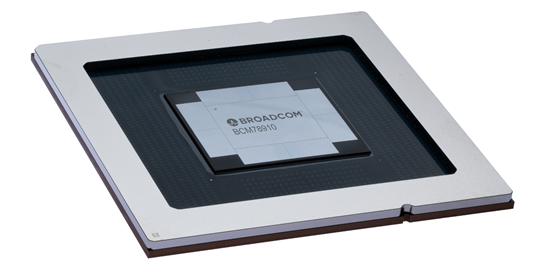Broadcom this week began shipping its long-awaited Tomahawk 6 switch chip, the first of its kind to deliver a whopping 102.4 terabits per second of Ethernet switching capacity. Built on TSMC’s newest 3 nanometer process, Tomahawk 6 delivers double the performance of its predecessor while keeping power consumption in check. For data centers running gigantic AI workloads, sometimes made up of clusters of hundreds of thousands of GPUs, this kind of open-standard Ethernet performance could be a game changer.
Key Technological Innovations
At the heart of Tomahawk 6 is the ability to consolidate both scale-up and scale-out networking within a single fabric. Traditional AI deployments are either proprietary interconnects or complex multi-chip modules. Tomahawk 6, on the other hand, uses standard Ethernet with revolutionary chiplet integration. Broadcom has packaged multiple silicon dies into a single module, which is boosting overall bandwidth without ballooning board-level complexity. This approach minimizes the number of switches needed in a data center rack, simplifying design and reducing overall power usage.
Highly advanced traffic-steering features set Tomahawk 6 apart from earlier models. Its “Cognitive Routing 2.0” engine continuously tracks link congestion in real time and makes flow control adjustments on the fly to prevent bottlenecks. The rapid failure detection reroutes traffic around faults in microseconds, ensuring AI training jobs, many of which take days to run continuously, don’t grind to a sudden stop because one port fails.
Meeting the Demands of AI Expansion
Fueling the need for this type of high-speed switching is the breakneck expansion in AI model size. Just a few years ago, it would have required a few thousand GPUs to train a state-of-the-art large language model. Top research labs today routinely employ clusters of 100,000 or more. Commodity Ethernet at 10 or 25 Tbps can no longer support such massive node counts without introducing latency or complex topologies. Tomahawk 6 tackles this head-on by supporting 64 ports of 1.6 Tbps each, making it possible for architects to design both high-performance, dense racks and large multi-rack fabrics with low oversubscription.
Broadcom’s decision to stick with Ethernet rather than proprietary interconnects is a testament to the protocol’s scalability. Ethernet’s dominance of enterprise networking enables organizations to leverage known tools, monitoring systems, and operational expertise when building AI clusters. That, in turn, reduces deployment risk and speeds time to production.
Market Adoption and Financial Outlook
Early adopters at major cloud and AI service providers are already integrating Tomahawk 6 into their future-generation racks. Although Broadcom isn’t naming names yet, industry watchers expect announcements of multi-exabyte AI clusters built using these chips to surface in the coming months.
On the financial side, Broadcom’s release of Tomahawk 6 is also imminent ahead of its fiscal second-quarter earnings. Analysts have indicated that AI infrastructure demand has been one of the catalysts for Broadcom’s recent revenue acceleration, and the stock has been in a multi-quarter consolidation zone as investors await to confirm that these new products will translate into sustained bookings. A strong uptake of Tomahawk 6 would cement Broadcom’s position as the leading provider of high-speed Ethernet switches.
The Road Ahead
Looking forward, the roadmap does not terminate at 102.4 Tbps. Broadcom is already talking about future generations: Tomahawk 7 at 204.8 Tbps and Tomahawk 8 at 409.6 Tbps, to keep pace with AI workloads that will only continue to get larger.
For now, Broadcom’s Tomahawk 6 is a benchmark for data-center networking. It marries the raw performance that the largest AI clusters of today require with the interoperability and ease of deployment that Ethernet provides. As AI continues to expand aggressively across industries, this new switch chip will shortly be a fundamental building block in the infrastructure behind tomorrow’s breakthroughs.
Visit our Tech page for comparable stories on the latest in tech infrastructure and market trends.



